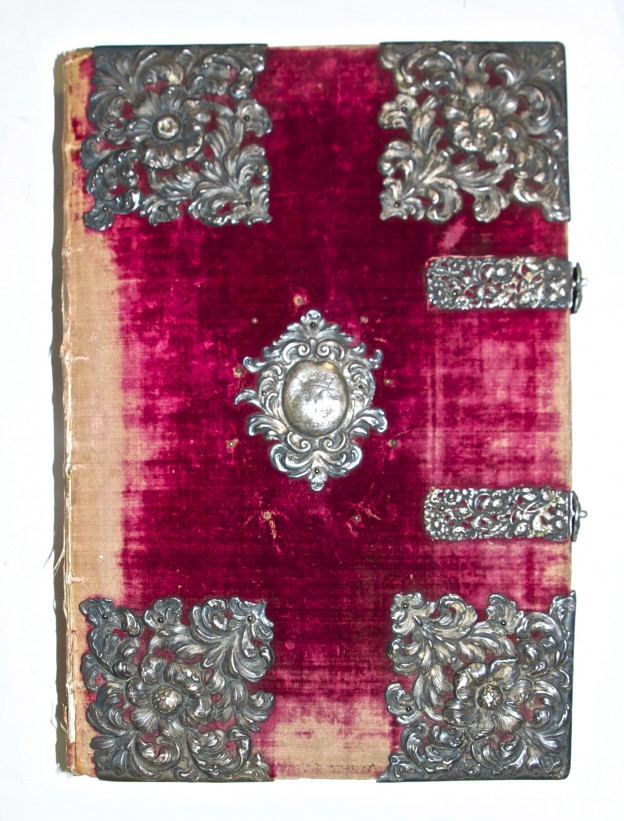MISSAL
C17th VELVET AND SILVER BINDING
Missale Romanum ex decreto sacrosanct Concilii Tridentini restitutum
Paris, apud Societatem Typographicam Librorum Officii, 1600£9,500.00
Folio, ff [xxxviii] 228, 42. Roman letter in red and black, double column within printed borders, extensive music. Ms column borders in red, historiated initials in pretty contemporary hand colouring of red, blue, green, gold etc throughout. Title within very fine architectural border depicting great figures of the New Testament and early church and incorporating the Royal Arms of Henry IV of France; 7 splendid full page engravings representing the major feasts and Last Judgement, one signed ‘Leonard Gaultier 1596’, early ms additions, one for the mass of St Anne at the beginning (stuck to blank) and another on final leaf. Faded silk markers (probably originally red), green silk page stubbs and eps., edges richly gauffered gilt. Superb contemporary binding of crimson or purple velvet, worn at edges and spine and cracked at joints, large baroque silver corner pieces to both covers and ornate clasps all beautifully worked to naturalistic patterns, central silver plaque within ornate frame to both covers, coat of arms engraved on upper and monogram on lower. In folding box.
A rare, elegantly decorated and sumptuously bound altar missal in the Tridentine rite, produced and embellished with no expense spared, ‘Ad maiorem Dei gloria’. Crimson or purple velvet bindings were often used on presentation copies for princes of the state or church, all the more so when elaborate silver decoration was added. In the present case the arms demonstrate that the owner was the child of the union of two European families of the high nobility, but unfortunately we have been unable to discover more. The armorial bearings (fleur de lys, lions passant, etc) are pretty standard though the orb above the latter is less usual but not indicative. The silver work, which is early baroque, is quite monumental and very richly carved, like an early Grinling Gibbons. The workmanship is not easy to place but there appears to be a mixture of French and German influences which suggests the Netherlands (a centre of book silverwork) or the borderlands of Eastern France and Western Germany, though we doubt the workmanship French. The whole was most likely bound for the family chapel of the Castle of the noble whose arms it bears. The ms addition of the mass of St Anne may be a clue to at least the Christian name of that individual.
Gaultier’s dramatic engravings are here in very striking clear impression, contrasting with the delicate watercolouring of the historiated initials. A beautiful and historic artefact.
In stock









